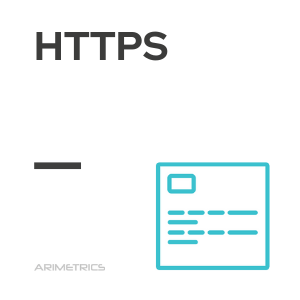
Definición:
Hyper Text Transfer Protocol Secure (HTTPS) is the secure version of HTTP, the protocol through which data is sent between the browser and the website to which you are connected. The “S” at the end of HTTPS stands for “secure” in English. This means that all communications between the browser and the website are encrypted and SSL certified.
What is HTTPS for?
HTTPS is primarily used to protect online transactions that require a high level of confidentiality, such as online banking and order forms on ecommerce sites. By encrypting data, HTTPS ensures that sensitive information is protected against unauthorized interception.
How to identify an HTTPS page
Web browsers such as Internet Explorer, Firefox and Chrome display a padlock icon in the address bar to visually indicate that an HTTPS connection is being used. Although someone could intercept the message between the sender and the recipient, with HTTPS they will not be able to understand it, as it is encrypted. Only the sender and the recipient, who have the encryption keys, can decrypt the message and access its contents.
Benefits of using HTTPS
Adopting HTTPS offers multiple benefits that go beyond simple data protection. These benefits not only improve security, but also contribute to user confidence and website performance:
- Enhanced security: HTTPS encrypts transmitted data, protecting sensitive information such as passwords and personal data from being intercepted by third parties.
- User trust: The presence of HTTPS and the padlock icon increases users’ trust in a website, which can enhance the site’s reputation and credibility.
- Better search engine rankings: Search engines, such as Google, favor websites that use HTTPS, which can improve SEO.
- Data integrity: HTTPS ensures that data is not altered or corrupted during transmission, guaranteeing that the information reaches the recipient intact.
How HTTPS works
HTTPS uses an encryption system based on SSL/TLS certificates to protect the communication between the browser and the web server. The process works as follows:
- Initial connection: When a user accesses an HTTPS website, the browser requests a secure connection to the server.
- Certificate exchange: The server sends its SSL certificate to the browser, which verifies its authenticity through a trusted certificate authority.
- Session encryption: Once the certificate is authenticated, an encrypted session key is established and used to protect the data transmitted during the session.
- Secure communication: All data exchanged between the browser and the server is encrypted using the session key, ensuring the privacy and integrity of the information.
